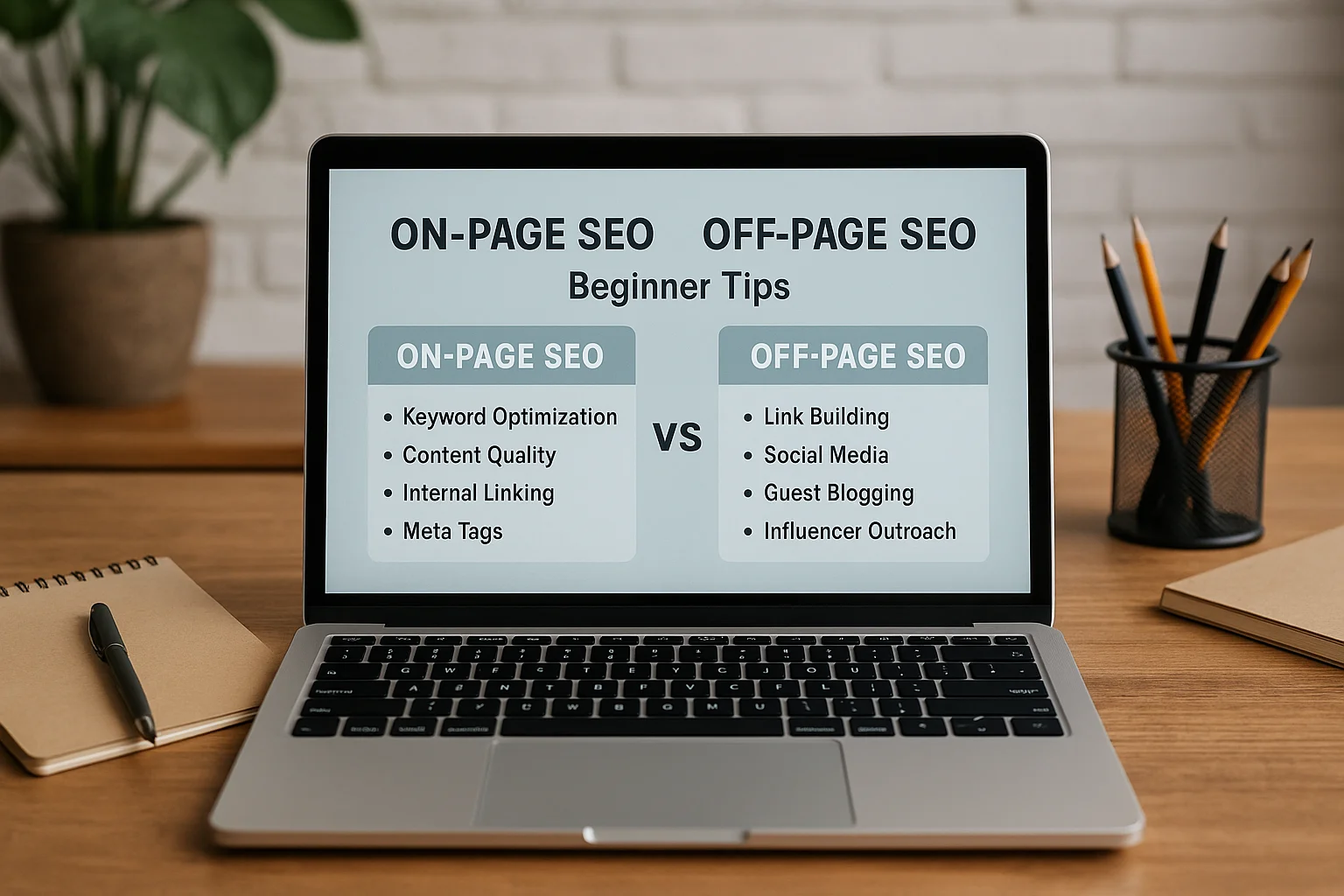The Impact of Core Web Vitals on Rankings and Conversions

What Are Core Web Vitals?
Core Web Vitals are a set of performance metrics introduced by Google to evaluate the real-world user experience of a webpage. They focus on three specific aspects that directly impact how visitors perceive and interact with your site: loading speed, responsiveness, and visual stability.
The three Core Web Vitals are:
- Largest Contentful Paint (LCP): Measures the loading performance of a page. It tracks how long it takes for the largest visible element, such as an image, video, or block of text, to render on the user’s screen. A fast LCP ensures that users see meaningful content quickly.
- First Input Delay (FID): Measures interactivity. It calculates the time it takes for a page to respond when a user first tries to interact, such as clicking a button or tapping a link. A low FID creates a more seamless and responsive browsing experience.
- Cumulative Layout Shift (CLS): Measures visual stability. It evaluates how much page elements shift unexpectedly while loading. A low CLS prevents frustrating experiences where users accidentally click the wrong button or lose their reading position.
These metrics are designed to reflect how users actually experience your site in practice, not just how it performs under ideal test conditions. By focusing on speed, responsiveness, and stability, Core Web Vitals provide a standardized way to measure user-centric performance across all websites.
Why Core Web Vitals Matter for SEO Rankings
Google has increasingly emphasized the importance of user experience as a ranking factor, and Core Web Vitals are at the heart of this approach. Search engines want to ensure that the pages they rank highly are not only relevant in terms of content but also provide a smooth and enjoyable browsing experience.
When a website offers fast loading times, responsive interactions, and stable layouts, users are more likely to stay engaged, explore more pages, and return in the future. These behavioral signals, such as reduced bounce rates and longer sessions, indirectly contribute to better search performance because they indicate to Google that the site is meeting user needs effectively.
Core Web Vitals were officially integrated into Google’s Page Experience update, meaning that sites failing to meet these benchmarks can face disadvantages in competitive search results. While high-quality content remains crucial, pages that combine relevant information with excellent technical performance gain a significant edge in rankings.
Another important point is that mobile-first indexing makes Core Web Vitals even more relevant. Since most searches happen on mobile devices, Google evaluates performance primarily from a mobile perspective. A site that struggles with responsiveness or layout shifts on smaller screens can see its ranking opportunities reduced.
Ultimately, meeting Core Web Vitals standards does not guarantee top rankings on its own, but it does strengthen the overall SEO foundation. In highly competitive niches where multiple sites offer similar content quality, superior performance metrics can be the deciding factor that determines which site ranks higher.
The Link Between User Experience and Conversions
User experience plays a direct role in determining whether visitors take desired actions on a website, such as making a purchase, signing up for a newsletter, or filling out a form. When the browsing journey feels smooth and intuitive, the chances of converting visitors into customers increase significantly.
One of the most important aspects is perceived trust and credibility. A site that loads quickly, responds instantly to interactions, and maintains visual stability gives users confidence. On the other hand, delays, broken layouts, or unexpected movements can create frustration and lead to abandoned sessions.
Studies consistently show that even small delays in loading speed can reduce conversion rates. For example, an extra second of page load time can cause potential customers to leave before completing a purchase. This effect is even stronger on mobile devices, where users expect instant results and have less patience for performance issues.
Another crucial factor is accessibility and ease of navigation. Visitors who can easily find information, interact with forms, and move through the checkout process without errors are more likely to complete their goals. A seamless experience reduces friction, which is one of the main obstacles preventing users from converting.
Visual stability also influences conversions. If buttons shift unexpectedly or product details move while the page loads, users may click on the wrong element, leading to errors or mistrust. Keeping layouts consistent ensures that visitors stay focused on their intended actions without unnecessary distractions.
By improving the browsing experience, businesses not only increase the likelihood of conversions but also encourage repeat visits and long-term customer loyalty. A website that feels fast, reliable, and user-friendly becomes a place where users feel comfortable completing transactions and engaging with the brand.
Common Issues That Hurt Core Web Vitals
Many websites struggle to achieve good Core Web Vitals scores due to technical and design-related problems that affect how users perceive performance. Identifying these issues is the first step toward improving both search visibility and user satisfaction.
One of the most frequent problems is the use of unoptimized images and videos. Large file sizes take longer to load, which slows down the rendering of important page elements and negatively impacts loading performance. In addition, images that do not have defined dimensions can cause layout shifts as the page adjusts while loading.
Render-blocking resources, such as poorly managed JavaScript or CSS files, are another major factor. When scripts are not optimized or deferred, they prevent the browser from displaying content quickly, which increases waiting times and reduces responsiveness.
Server-related issues can also play a role. Slow server response times, inadequate hosting, or a lack of caching mechanisms delay the delivery of content to the user’s device. This creates noticeable lags, particularly for visitors on slower internet connections or mobile networks.
Unexpected layout shifts are often caused by elements like dynamic ads, pop-ups, or late-loading widgets. These interruptions create instability in the page structure and frustrate users by pushing content down or altering the reading flow.
Poor mobile optimization is another frequent challenge. Websites that are not adapted to different screen sizes or that use elements too small for touch interaction can score poorly on responsiveness. Since the majority of browsing happens on mobile devices, this issue significantly affects user experience.
Finally, the lack of proper resource prioritization can hurt performance. For instance, loading secondary scripts or third-party trackers before essential content makes users wait longer before accessing the main parts of the page. Prioritizing what loads first is key to ensuring better performance scores.
Ready to showcase your project?
Join thousands of developers and entrepreneurs who have already listed their websites in our directory. Get discovered by potential users and grow your audience.
Free to list • Instant approval • No hidden fees
Frequently Asked Questions
What are Core Web Vitals?
Why do Core Web Vitals matter for SEO?
What common issues hurt Core Web Vitals?
Related articles

How to Optimize Your Project Pages for Faster Google Indexing
Boost your project pages’ visibility by speeding up Google indexing. Learn actionable strategies from URL optimization to structured data, internal linking, and content tips for faster search engine recognition.

Quick Fixes for Google Indexing Errors
Struggling with Google indexing errors? This guide explores quick and practical fixes to help your pages appear in search results faster. Learn how to resolve common issues like “Crawled – Not Indexed,” blocked URLs, and duplicate content while ensuring your site remains fully optimized for long-term SEO success.

SEO Trends to Watch in 2025 for Startups
Discover the key SEO trends shaping 2025 and learn how startups can adapt to stay competitive. From AI-powered search and voice optimization to EEAT and zero-click results, this guide explores practical strategies to boost online visibility and long-term growth.

Local SEO for Small Projects: A Practical Guide
Local SEO is essential for small projects aiming to attract nearby customers. This guide covers practical strategies—from Google Business optimization and keyword research to managing reviews and local links—to help your business get noticed locally and grow effectively.

SEO Myths That Are Holding Back Your Project
Many businesses waste time on outdated SEO advice. From overvaluing keywords to chasing low-quality links, myths can stall your growth. This post debunks common SEO misconceptions and shows what strategies truly drive results.

On-Page vs Off-Page SEO: A Beginner’s Guide
SEO can be confusing for beginners, but understanding the difference between On-Page and Off-Page SEO is essential. On-Page SEO focuses on optimizing your website’s content and structure, while Off-Page SEO builds authority through backlinks and online presence. This guide breaks down the basics to help you start improving your site’s search rankings today.

The Importance of Site Speed for SEO and User Experience
Site speed is a critical factor for both search engine rankings and user experience. Slow-loading pages frustrate visitors, increase bounce rates, and hurt conversions. This article explores why speed matters, how it affects SEO, and practical tips to make your website faster.

How to Perform a Simple SEO Audit for Your Website
Conducting an SEO audit doesn’t need to be complex. With a few simple steps, you can evaluate your site’s performance, uncover technical issues, optimize on-page elements, and strengthen your SEO strategy. This guide will walk you through the essential checks to ensure your website is both search engine and user-friendly.

Using Google Analytics to Track SEO Performance
Google Analytics is a powerful tool to track and improve your SEO strategy. From monitoring organic traffic to analyzing user behavior and conversions, it provides insights to optimize your website and boost search engine performance. Learn the key metrics, reports, and tips to make data-driven SEO decisions.